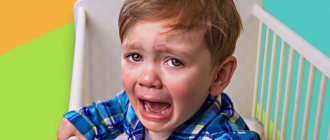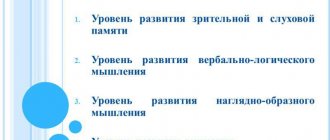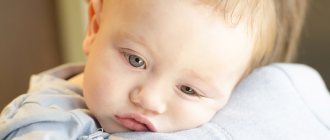Why do sounds appear at different ages?
The development of a child’s speech requires the active inclusion of a huge number of different processes: the development of hearing and vision, memory, thinking, attention, training the muscles of the tongue and lips. Try pronouncing the sounds [a] and [r] and compare how much more control and skill the second sound requires, while the first is pronounced without complex movements of the tongue and lips. It is not surprising that the sound [r] can appear in a child several years after the appearance of speech, because it takes a lot of practice for the child to understand how to pronounce and use such a complex unit of speech.
Unfortunately, to produce complex sounds, some children may require the help of a specialist: anatomical features, unclear speech of the parents themselves, and other features of the child’s environment and development can lead to the fact that children need a special exercise program and supervision from a speech therapist and doctors.
The question arises, how to recognize whether a child needs a speech therapist to correct sound pronunciation or whether he just needs to read more and learn poetry? To do this, parents need to understand and analyze four things:
- General stages of development of sound pronunciation in children. For example, the sound [c] most likely will not appear before the sound [t], children under three years old can be forgiven for softening their consonants, and the sound [r] can only be formed by the age of five or six.
- Environment. When a child learns, he takes the speech of the people around him as a basis, so if dad “swallows” the endings of words, mom lisps, grandma burrs, and grandpa has a lisp, the child has every chance to collect a full bouquet of sound pronunciation disorders. It should also be remembered that babies born into bilingual families tend to mix the sounds of different languages.
- Health and anatomical features of the child. Birth injuries, hearing impairment, malocclusion, unusual structure of the palate, as well as general susceptibility to disease can become a serious obstacle to the development of speech and are often insurmountable without the support of specialists.
- Features of education. Children whose parents do not pay enough attention to their speech may get used to pronouncing sounds incorrectly, but those children who receive too many comments tend to simply skip complex sounds, trying not to run into criticism once again.
If a child has difficulties in one or more categories (for example, the baby is far behind age norms or is surrounded by adults with speech impediments), it is worth consulting with specialists and getting recommendations on the development of the baby’s speech and sound pronunciation.
Remember, any developmental disorders are corrected more easily and quickly if work begins immediately after their appearance, so you should not delay a visit to a children's speech therapist, psychologist or doctor if something worries you about the baby's development.
Speech development of children 2-3 years old
In the speech of a child of the third year of life, the sounds [s'], [l'], [th'], as well as [g], [x], [k], [m], [p], [b] should appear. , [n], [v], [f], [d], [t], and, of course, all vowels.
Although the pronunciation of many sounds is still very far from ideal, this is due to the mobility of the muscles of the tongue and lips, which are not yet sufficiently developed. The child replaces most difficult sounds with easier ones to pronounce. So, the baby replaces hissing sounds with whistling sounds: “tsai” (tea), “zyuk” (beetle). A child’s vocabulary expands quickly, reaching approximately 300 words by the age of two, and up to 1000 words by the age of three. By the third year of life, the baby enjoys listening to simple fairy tales and stories, and easily carries out simple verbal instructions. By the age of 2.5 years, the baby should already have developed phrasal speech; phrases often consist of two words “mama give”, “mama pi”. But do not sound the alarm if your child does not start speaking at two years old, this is all very individual and often children begin phrasal speech by the age of three. The age of two or three years is considered the most critical and it would not be out of place to see a specialist in the absence of phrasal speech.
Calendar of sound pronunciation development from birth to school age
From birth to three years: the simplest sounds
Already in the first months of life, the baby begins to hum, that is, to pronounce individual sounds without a specific connection to objects and situations. So, the very first sounds become vowels , [u], [o], [i], which then begin to mix with the simplest consonants, and we get the well-known [agu], [agi], [aha], [uga] and the like they are the predecessors of words.
At about six months, the humming gives way to baby babble. Parents really look forward to the appearance of babbling, because it is an excellent indicator of the baby’s intellectual well-being and the absence of hearing problems. It is baby babble that refers to the pronunciation of chains of syllables: [mamamama], [papapapa], [babababa], [bububu]. This period lasts up to about a year, the first simple words and “substitutes” for complex words appear: baba, mom, am-am (eat), av-av (dog), etc.
Within a year (from one to two years), the baby can already express himself well in simple words and even makes small phrases, trying not only to name an object, but also to describe actions or states. This practice allows the baby to learn to clearly pronounce vowel sounds and the simplest consonants [k], [p], [b], [t], [d], [g], [m], [n].
From two to three years old, children already begin to express themselves using simple sentences and learn the simplest grammatical rules. Pure sounds [v], [f], [s], [e], [x], [s], [z], [l] appear in their speech.
Remember that up to three years of age it becomes completely normal to:
- Softening of consonants (demik, not house),
- Omitting or replacing complex consonants (loska or loka instead of spoon).
Do not under any circumstances imitate such cute features of the speech of babies and never cooze with children. This will reinforce the incorrect pronunciation of sounds, which will subsequently be difficult to correct without the participation of a speech therapist.
From three to five: speech sounds more mature
After three years, the softening of sounds, which sounds like lisps, gradually goes away. The baby begins to distinguish between the use of hard and soft sounds: house, ice, cat, honey. Also, words starting with iotized vowels (yula, fir-tree, berry) no longer cause difficulties. Active development awaits the sounds [s], [z], [ts]: they are first lowered and replaced by simpler ones, but closer to four years, these sounds in soft and hard versions are pronounced by the child clearly and at the right moments.
Things are more complicated with the sounds [w], [zh], [sch], [h], [l], [r], [r']. Kids also find replacements for them or skip them altogether (horse, zouk, peck, kaowa, uitka). These are the sounds that are the last to be mastered.
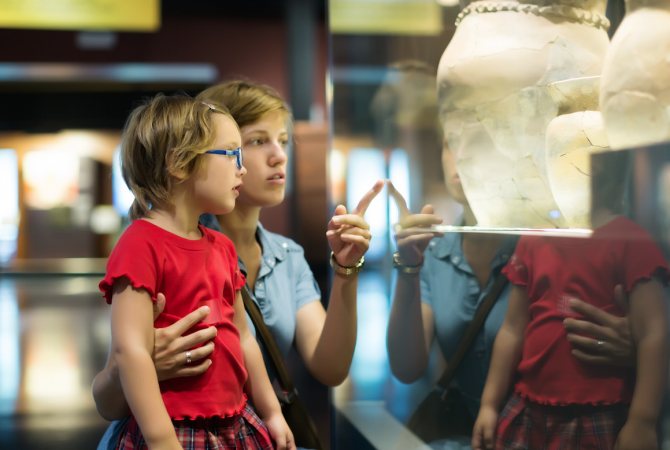
From five to six: mastering all sounds
The first to be heard are hissing sounds: [w], [zh], [sch], [h]. Children gradually stop looking for replacements for them and begin to accurately identify these sounds and use them in their own speech. The sound [l] and its soft analogue are mastered next. The most difficult sound to master is the sound [p], which can appear only by the age of six, and before that it can be replaced or completely omitted even at the beginning of a word, creating the famous ybu, zebyu, zhilaf and other non-existent animals.
So, even before school, at the age of 6-6.5 years, children normally master all the sounds of the Russian language, distinguish them and use them correctly in their own speech.
Remember that, unlike substitutions and omissions, distorted analogues of sounds that do not exist in the Russian language (for example, the “French” grazing [r] or something similar to the English nasal [n]) require immediate correction. Such substitutions become incredibly firmly established in children’s speech and never go away without corrective exercises. In such cases, we strongly recommend that you contact pediatric speech therapists.
The formation of sound pronunciation in children occurs gradually. The child first learns those sounds that are easy to pronounce, and sounds that are more complex in terms of articulation appear later. In the first months, the baby pronounces sounds involuntarily. The sounds pronounced by the child during this period are unclear, sometimes they are even absent in his native language, and some of them cannot be reproduced. Children of different nationalities during this period pronounce the same sounds, regardless of what language they subsequently learn. However, then the baby begins to pronounce only those sounds of his native language spoken by the people around him.
Currently, according to scientific research, about 40% of children in Russia have problems with sound pronunciation (they continue to incorrectly pronounce the sounds of their native language by the age of 5-6, when speech should be formed). And every year the number of such children is growing rapidly. Violation of sound pronunciation negatively affects the child’s emotional state, his self-esteem, the formation of personality traits, communication with peers, and also interferes with the mastery of written language (writing and reading).
Correct pronunciation of sounds is extremely important. And most often parents understand this. But they cannot always objectively assess when omissions and substitutions of sounds in their child’s speech are the age norm, and when urgent measures need to be taken to correct the situation. As a result, excesses often occur in one direction or the other: either a two or three year old child is persistently taught to “growl”, or they persistently do not notice the “mess in the mouth” of a five or six year old child and believe that he will “speak out” himself. To prevent such extremes from happening, today we will look at the norms for the appearance of speech sounds.
Age
| Stages of speech development | |
| 1 – 2 months | The development of a child’s speech begins at 1.5 months. At the beginning, humming appears: the vowel sounds “aa”, “oo”, “au”. |
| 2 months | The humming becomes more complicated with the inclusion of consonant sounds - “gu” or “bu”, “ho”. |
| 3 months | Begins to make sounds similar to the sound [f], [s], [v]. |
| 3 – 6 months | Long pronunciation of sounds: “al-le-e”, “ly-ala”. The child hears sounds, sees articulatory movements of the lips of others and tries to imitate. Repeated repetition of a specific movement leads to consolidation of a motor skill. This is the period of babbling, the child imitation pronounces individual syllables: ma-ma-ma, ba-ba-ba, etc. Understanding of the speech of others develops. |
| 7 – 12 months | The child begins to repeat more and more diverse combinations of sounds after the adult. From vowels, the sound [a] is most often produced; from consonants, the sounds are mainly [p], [b], [m], [k], [t] and some others. However, these sounds are not yet stable enough and are pronounced only in small sound combinations. Kids begin to distinguish intonation, then words denoting objects and actions. |
| 12 months | The child pronounces individual words consisting of unambiguous paired syllables: “mother”, “woman”. By the end of the year, whole words like mom, dad, uncle appear. The child clearly pronounces vowels: [a], [o], [u], consonants: [m], [b], [k], [g]. By the age of one year, his dictionary will already have 10-15 consciously pronounced babbling words: “mom”, “dad”, “baba”, “give”, “na”, “drink”, “ko-ko”, “bi-bi” , “av-av”, “pi-pi”, etc. |
| 1 – 2 years | Children begin to clearly pronounce such vowel sounds as [a], [u], [i], [o], but the sounds [s], [e] are replaced with the sound [i]; Most children either do not pronounce most consonants at all, or pronounce them incorrectly, replacing them with sounds that are simpler in terms of articulation. A number of hard consonants are replaced by soft ones. This mainly applies to the front-lingual sounds [g], [d], [s], [z] (“dyai” instead of dai, “syanki” instead of sankee). There are also no hissing sounds, sounds [l], [r'], [r]. Sentences should appear in the baby’s speech: “Mom, give me some juice,” “Teddy bear, sit here,” “I want to drink tea!” You can note the appearance of the first adjectives in the child’s active speech: “good”, “bad”, “big”, “small”, “red”. Don’t be upset if they sound like “hayoshi”, “pahoi”, “bashoi”, “maikii”, “kasii”. By the age of two, the child should master and clearly pronounce vowel sounds: [a], [u], [o], [i] and the earliest consonants in time of appearance: [k], [k'], [g], [g '], [m], [m'], [p], [p'], [b], [b'], [t], [t'], [d], [d'], [n ], [n']. The active vocabulary by the age of 2 is 300 - 400 words. |
| 2 – 3 years | By the age of three, the child masters the sounds [v], [v'], [f], [f'], [s], [e], [x], [x'], [s'], [z'] , [l']. Up to three years, the age norm is considered to be softening of consonant sounds (“syapka” instead of “hat”, “dem” instead of “house”, etc.). A child at this age, as a rule, does not pronounce all other sounds at all (misses them) or replaces them with simpler ones (instead of “bear” the child can pronounce “mika”, “bowl”, “bowl”). Easily remembers and recites short rhymes. Children appear to have formed the basic grammatical categories. Vocabulary reaches 1000-1200 words. |
| 34 years | In the period from 3 to 4 years, the softening of hard consonant sounds gradually disappears (normally, during this period, the child stops saying “dem” and clearly pronounces “house”). The baby masters iotized sounds (for example, in the words “skirt”, “south”, “hole”). But there is still a violation of the pronunciation of sounds [s], [z], [ts], [sh], [zh], [sch], [h], [l], [r], [r']. These sounds are replaced by simpler ones (for example, [s] to [t], [t'] or [s']; [p] to [j] (read as th), [l'] or omitted, etc. ). By the age of four, most children correctly pronounce whistling sounds: [s], [s'], [z], [z'] and distinguish them well in free speech. Active dictionary - 2000 words. The child begins to use expanded phrases and construct complex sentences. His interest in the sound of the word, in the “structure” of speech, grows. He begins to create new words: “kopatka” (shovel). Interested in the origin and meaning of words (“Why is an elephant called an elephant?”). Some children retain a general softness of speech. |
| 45 years | After 4 years, the child correctly pronounces in speech and differentiates (distinguishes) among themselves all whistling sounds without exception ([s], [s'], [z], [z'] and [ts]). At this age, a violation of the pronunciation of the sounds [w], [zh], [sch], [h], [l], [r], [r'] is still possible. A child normally easily identifies and names the stressed vowel at the beginning of words: (for example, in the words “duck”, “stork”, “cloud”); can determine and name the order of sounds in mergers: “ay”, “ua”, “ia”. At this age, speech becomes more correct, more varied, and richer. The first complex sentences appear in the answers. Active dictionary - 3000 words. |
| 5 – 6 years | At the age of 5-6 years, as a rule, hissing sounds ([w], [zh], [sch], [h]) are pronounced correctly by the child, and they are also differentiated by him in free speech. The sounds [sch], [ch] are becoming softer. Many children master the sound [l]. And only the sounds [p] and [p'] are either replaced by [l], [l'], [j], or omitted (this is considered a physiological norm). A child at this age can easily determine the initial and final sounds in words, can determine the number of sounds in a three- to five-sound word, and can choose a word for a given sound. By the age of six, the child correctly pronounces and differentiates all the sounds of his native language in speech. He can determine the place of any sound in a word, determine the number of sounds in a word, and select a word for a given sound. |
| 7 – 17 years old | Children master sound analysis and learn grammatical rules for constructing statements. The child masters written language and comprehends all the richness of his native language as a whole. |
The development of a child’s speech is influenced by three main factors:
* Development of fine motor skills of the hand;
* Development of mental processes (memory, attention, thinking, imagination);
* Communication. Communicate with your child every free minute, read as much fiction as possible.
Andreevskikh M.V., speech therapist teacher
Recommendations for developing a child’s correct speech
We have already mentioned that the development of a child’s pronunciation and his speech in general depends on his physical condition and the environment in which he develops, so your actions towards the baby directly affect the development of his speech. What points should be taken into account?
Be attentive to your child's health
Take care of your baby’s health, monitor his physical activity, keep a diary of observations of your child and make all changes in it: he began to cry more often, ate less, slept longer than usual, began to smile at his parents, etc. Regularly share your observations with your pediatrician and try to follow his recommendations. Remember that frequent illnesses and neurological disorders can affect the baby’s speech development.

Monitor your baby's surroundings
Don’t let your family distort your speech when communicating with your child, the phrase “Who’s so screwed up here and is looking at the folnyfko?” will not benefit the child’s emotional or speech development. Also, carefully monitor the speech of the specialists who work with the baby: do not doubt that in just a month the baby will perfectly master all the features of his nanny’s speech. If your loved ones have problems with sound pronunciation, then you should contact a speech therapist and get recommendations on how to prevent your child from acquiring similar problems.
Talk to your child
You need to talk to your child, pronouncing words clearly and without distorting them, from birth. Train yourself to say as much as possible what is happening around you while you are with your baby: “A car is driving past. The car is big red, but there is a small yellow one standing there. We go to the stop and take the bus. Vanya likes to ride the bus? When your baby asks for something, be sure to talk to him about what kind of item he wanted: “Do you want an apple? Look what an apple. Tasty apple. Now mom will cut Vanya an apple.” When you name objects and use verbs and adjectives in your speech, the child’s speech (as well as memory, attention and thinking) is enriched.
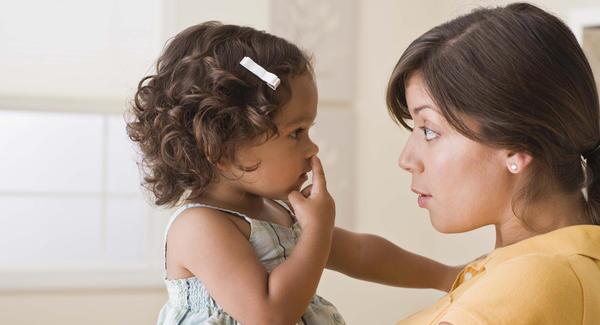
Visit interesting places
Interesting events stimulate the child to talk. The baby will be happy to talk if he is interested. Go to museums, parks, zoos and botanical gardens together; even watching a train on a railway bridge can become a whole event in a child’s life. A change of environment incredibly develops a child’s vocabulary, because where, if not in a zoo, will a child understand what a crocodile is and what a stork really looks like.
Spend time developing fine motor skills
The human brain is designed in such a way that speech does not develop without the development of fine hand movements: modeling, drawing, appliqué, sorting out cereals and packing small objects are just a small part of the activities in which fine motor skills are involved. Try to regularly include such activities in your baby's daily routine.
Use special games to develop speech
Pure twisters (repeated syllables that rhyme with a subsequent sentence, for example, “Mar-mar-mar, there’s a mosquito on your nose!”), tongue twisters and games for the development of phonemic awareness can be used at home and on a walk, in line to the pediatrician and on the train to the country. Repeat syllables with different intonations and voices of different characters, ask the child to do something (clap, stomp, sneeze) when he hears a certain sound in the words you pronounce, ask him to find an object around that is denoted by a word with the desired sound or syllable.
The development of correct sound pronunciation does not require special and long-term activities: it is enough to communicate regularly with the baby, be attentive to his health and fill his life with interesting events. In any daily routine, you can also find 5-10 minutes for games to develop speech and phonemic awareness.
How many words should a 2 year old child speak?
A child between 1 and 3 years of age develops speech rapidly. The main task is to get to know not only the objects, but also their purpose: what is it, what is it for? To understand the diversity of the environment, a child needs a lot of communication. The kid may not just insist, but openly demand: explain! Show me! What to do with this?!
This is a necessary stage of development, and you cannot skip it: answer all questions, tell stories (despite the fact that the child is able to focus for a very short time), teach him to talk with toys, with pictures, with pets.
By the age of one and a half years, a child understands the meaning of many words: in particular, he knows the parts of the body, follows simple instructions (go get a cup) and is able to follow a simple story based on plot pictures.
The normal vocabulary of a 1.5-year-old child is 20 words; by the age of 2, this figure doubles and can reach 50 words. In the period from one and a half to two years, the skill of expressing thoughts using simple sentences is formed. The starting version may contain babbling words, which will later be replaced with full ones (for example, “Vanya pipi” - “Vanya peed”).
Is there something wrong? Here's what you need to keep an eye on when your child is one year old:
- 3-5 words appeared in the arsenal, and for more than six months the vocabulary did not expand, the child did not imitate, did not try to learn new ones;
- the child says part of the word instead of the whole (“deka” instead of “girl”) - this is normal at the development stage. But it should not become a habit: if after a month or two of repetition the word does not “unfold” to the required volume, this is a reason for correctional work;
- From the age of 2, hesitations in speech are also considered an alarming signal: there is a threat of stuttering.
conclusions
Children master the sounds of their native language throughout preschool age. Together with the first words, the simplest sounds are pronounced, and over time, when the articulatory apparatus is already sufficiently developed, the child begins to pronounce complex consonants, for example, [p] or [z]. The entire process of mastering sounds, from infant humming to fully developed pronunciation, can take 5-6.5 years. An organized environment and parental attention contribute to the development of correct speech in the child, and regular consultations with a speech therapist and pediatrician will help prevent speech disorders in the baby.
What is active and passive vocabulary?
All the words that a child knows are his vocabulary (lexicon). Moreover, those words that the baby understands, but does not pronounce himself, belong to the passive dictionary. And those words and phrases that are constantly used in everyday speech are included in the active one.
Olga Ivanova: “For example, if you ask a one-year-old child “where is the cat?” and he points to the pet or the corresponding picture with his finger, which means the word “cat” is already in his passive dictionary. When he independently says “cat”, or “koska”, or any other sound that means a cat for a child, we can say that the word has become an active lexicon.”
It is worth noting that the passive vocabulary is always larger than the active one, even in an adult.
After all, each of us knows what society, quantum, molecule are, yet we almost never use these words in everyday speech.
Speech therapist advice
If a neurologist or psychiatrist diagnosed your child with speech development delay (speech development delay) during the first examination, do not panic. Each child has a reserve of time up to 3 years when he can begin to speak. This can happen in a year, ahead of development according to WHO standards, or closer to 3 years. The main thing is to undergo a full examination in case of speech underdevelopment in order to exclude the presence of pathologies of a neurological or organic nature.
If, in addition to the developmental disorder, doctors do not give the child any concomitant diagnoses, the child is completely healthy, speech delay is his individual feature, he will speak later. Parents can help the baby cope with a difficult task faster, for this they need:
- read more fairy tales, sing songs, tell stories and poems to the baby;
- walk in the fresh air and communicate with the baby while walking, discussing surrounding natural phenomena;
- play outdoor and board games, pronouncing colors, shapes, seasons, etc.;
- collect pyramids, cubes, mosaics with your child;
- talk more with the baby, even if he cannot yet fully respond to an adult;
- visit theaters, performances, circus museums.
Enough time should be allocated to communicate with the child. It is advisable to stop watching TV shows and computer games. Attention and parental love will help in speech development and creating a good base for acquiring new knowledge.
What is the norm of speech development
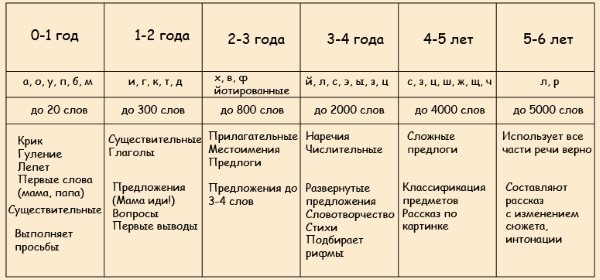
Pediatricians, neurologists, speech therapists, and teachers rely on the norms of speech development when working with children. These include progress in speaking and emotional development characteristic of each individual period of a child’s life. From birth, specialists observe the baby, how he learns to respond to the voice of an adult, reacts to speech from the outside, begins to “walk”, babble and gradually comes to the full process of speaking.
Psychologists warn that it is not worth relying fully on WHO criteria. Each child is an individual, a person with distinctive qualities. One baby can speak at 2 years old, another at 3, and this will be the norm. The main thing is to respond in a timely manner to the delay in speech development, work with the child, and undergo an examination. Often problems lie in the character traits of the baby.
How to promote speech development?
- Take every opportunity to talk to your child or tell him something. During your daily walks, describe to him everything that he sees around you, adding interesting information. Ask questions. He should also be involved in the conversation.
- During any joint activity, comment on what you are doing and at the same time show it clearly.
- Use special educational cards with pictures and words. Now there are many really interesting and educational applications for phones and tablets.
- Try to present all this in a playful way to attract the baby’s interest.
- Try different types of gaming activities. You know your child better than anyone: what he is interested in and likes. Use your imagination to come up with various activities aimed at speech development.
- Be sure to read fairy tales, rhymes and nursery rhymes to your child. Show all the pictures in the books. And then ask him about what you just read. For example, “Show me where the cow is.” How does she speak? etc.
- Develop your child's articulation. Give him solid food. Let him try to eat with a spoon. Teach him to blow and spit.
- It is important to remember that all the exercises and tips you use to help your child succeed in speech development should be constant and daily. Just get yourself such a useful habit.
- Don't compare your child to others. Children are individuals. Children's achievements also vary. Some people succeed in one thing, and some in another.






